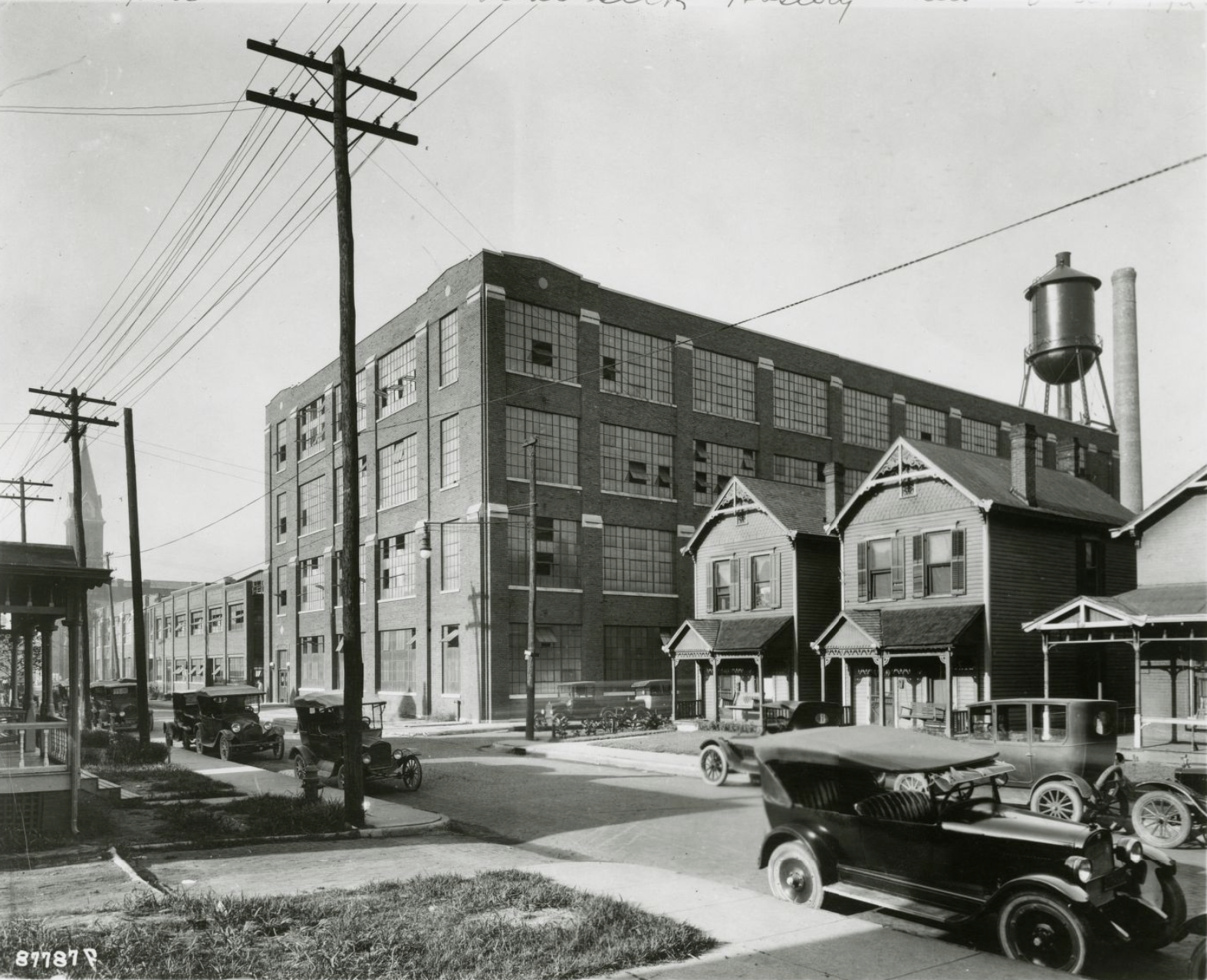Real Silk began operations in 1922 under the direction of J. A. and L. L. Goodman. At its peak, the company sold more than 12 million pairs of women’s hosiery annually.

The company experienced financial difficulties in the early 1930s as a result of the Great Depression, and a bank committee assumed control of the business. Real Silk’s financial situation improved shortly thereafter when gained control of the company in 1932.
Efroymson was confronted with a violent workers’ strike in April and May 1934, which resulted in 16 arrests. The is one of the best-known strikes to take place in Indianapolis. Despite the strike, Real Silk rebounded during World War II by manufacturing parachute bomb sleeves and hosiery for male and female military personnel. Efroymson successfully rebuilt the company before his death in November 1946, at which time his son became president.
As profits worsened in the early 1950s, Efroymson closed the company’s manufacturing operations in Indianapolis and Dalton, Georgia, liquidated its manufacturing holdings, and sold the bulk of its machinery and inventory. In the mid-1950s, Efroymson registered Real Silk Investments, Inc., with the Securities and Exchange Commission as a closed-end investment company.
In 1961, the investment company transferred its hosiery and lingerie business to Realsilk, Inc., converted its 6-acre, 425,000-square foot manufacturing center at 611 North Park into the Printing Arts Center, Inc., which housed a variety of printing-related businesses until the 1970s, and conveyed its remaining real estate to SLK Realty Corp.
In 1986, the approved converting the vacant Real Silk factory into apartments and condominiums. The company name continues with the 611 North Park location now known as Real Silk Lofts.

Help improve this entry
Contribute information, offer corrections, suggest images.
You can also recommend new entries related to this topic.
